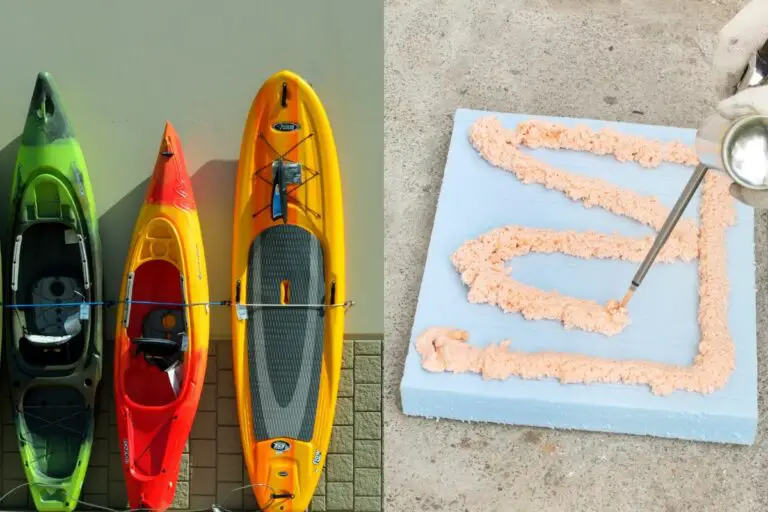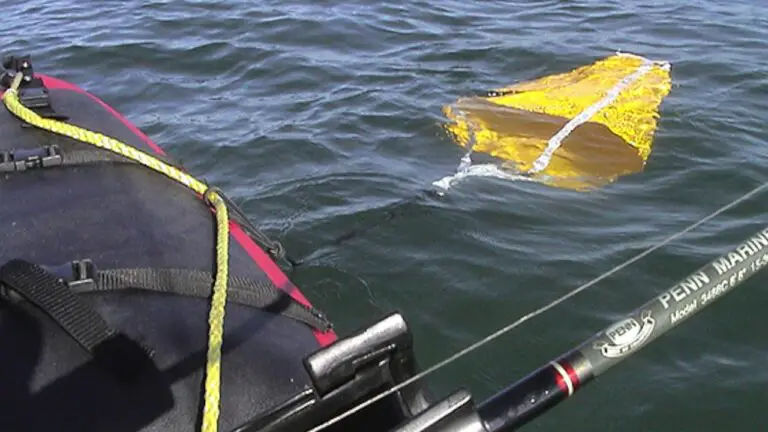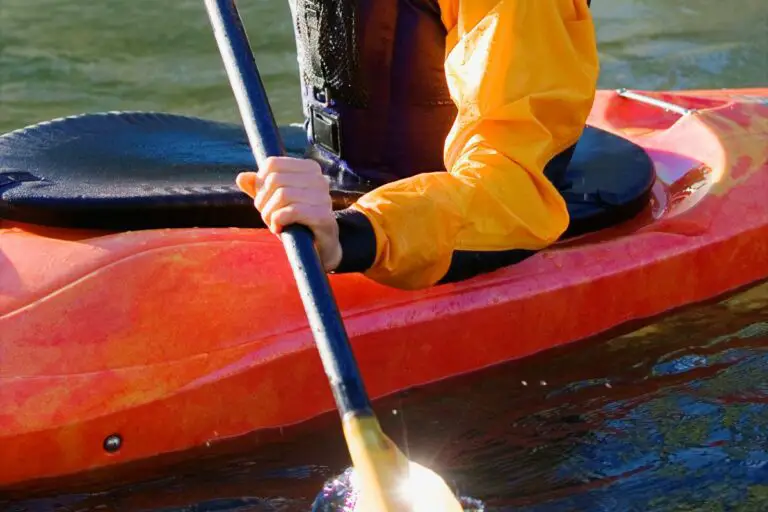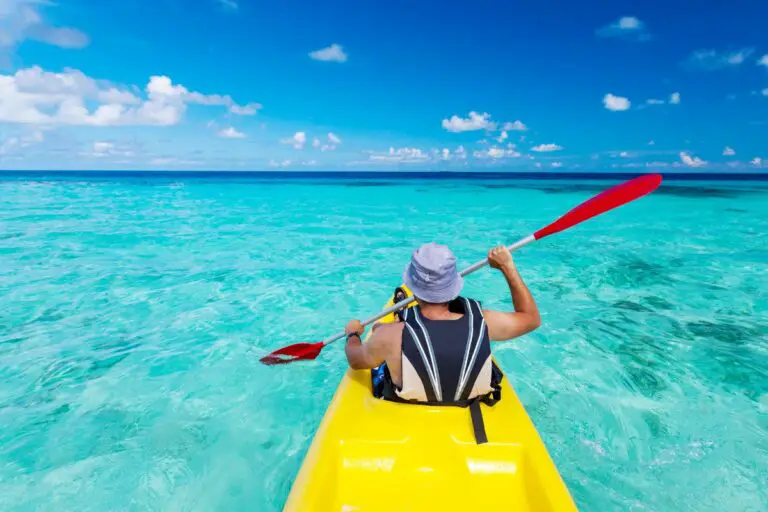Is Kayaking At Night Safe? 10 Tips You Must Follow
Kayaking is a popular outdoor activity that provides a great opportunity to explore and enjoy the beauty of nature. However, some kayakers may be interested in paddling at night to experience a different kind of adventure.
While kayaking at night can be a thrilling and unique experience, it also raises concerns about potential risks. So, is kayaking at night safe?
Kayaking at night can be safe as long as you are aware of the dangers you may encounter and take precautions to stay safe, such as wearing a personal flotation device, using proper lighting to increase visibility, packing the essential gear, and planning your route ahead of your trip.
Keep reading to learn more about the dangers of kayaking at night and how to minimize these dangers and stay safe.
Table of Contents
Is Kayaking At Night Safe?
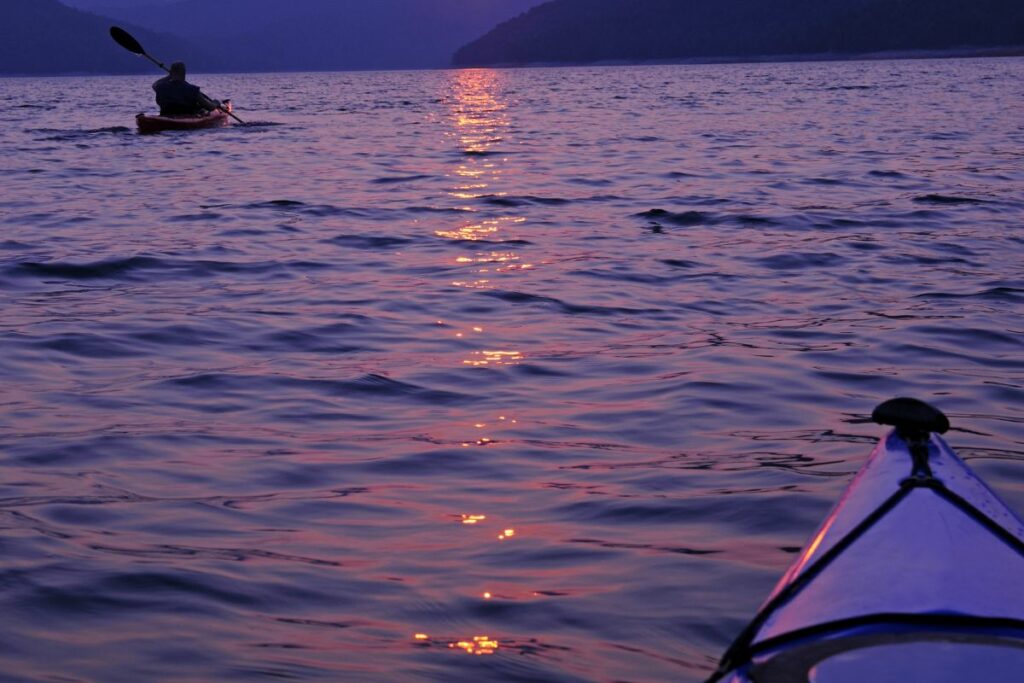
Kayaking at night can be a thrilling and unique experience, as it allows you to explore a different side of nature that is not visible during the day. The quiet and peaceful environment, illuminated by the moon and stars, creates a serene and tranquil atmosphere that cannot be replicated during daylight hours.
However, kayaking at night may not be the safest option for some kayakers, especially if you do not have enough experience or you do not take proper safety precautions.
In order to make your night kayaking experience safer and more enjoyable, you need to be aware of the potential dangers you may encounter and the safety precautions you need to take to minimize these dangers.
The Dangers of Kayaking At Night
Here are some of the potential dangers of kayaking at night:
- Reduced Visibility: At night, it can be difficult to see obstacles such as rocks, logs, or other watercraft, increasing the risk of collisions or capsizing. Even with proper lighting, seeing details in the water or on the shoreline can be challenging.
- Capsizing: Kayaking at night can increase the risk of capsizing, especially if you’re inexperienced or do not have proper safety gear. Maintaining balance and avoiding obstacles can be challenging in the dark, increasing the chances of falling into the water.
- Hypothermia: Nighttime temperatures can be colder than during the day, increasing the risk of hypothermia if you accidentally fall into the water or get wet.
- Getting Lost: It’s easy to get lost while kayaking at night, especially if you’re unfamiliar with the area. This can increase the risk of paddling into hazardous conditions, getting stranded, or running out of supplies.
- Difficulty in rescue situations: In case of an emergency or capsizing, rescue operations can be challenging at night, especially if you’re far from shore or in a remote location, as the poor visibility will make it harder for rescue personnel to locate you and provide assistance.
10 Tips to Stay Safe When Kayaking At Night
Here are some tips to stay safe when kayaking at night:
- Wear Proper Clothing and Safety Gear: Always wear a personal flotation device (PFD) and dress appropriately for the weather conditions. It’s also important to wear bright, reflective clothing or accessories to make yourself visible to other boaters.
- Have Proper Lighting on Your Kayak: You need to have proper lightings, such as a headlamp, deck lights, and navigational lights, to increase visibility and ensure that other boaters can see you.
- Check Weather Conditions: Before heading out, check the weather forecast, tides, and currents. Avoid kayaking in high winds, rough seas, or other dangerous conditions that can increase the risk of capsizing or other accidents.
- Paddle with a Partner: Paddle with a partner or in a group whenever possible. This can increase safety in case of an emergency or rescue situation.
- Plan Your Route in Advance: Plan your route in advance and make sure you are familiar with the area.
- Let Someone Know Your Plans: Before heading out, let someone know where you’re going and when you plan to return. This can be a friend, family member, or park ranger.
- Avoid Alcohol: Alcohol impairs your judgment and coordination, increasing the risk of accidents and injury. So, avoid drinking alcohol before or during your kayaking trip.
- Take Breaks When Necessary: Take breaks when necessary to rest, eat, and hydrate. Kayaking at night can be tiring, so it’s important to pace yourself and avoid exhaustion.
- Stay in Well-Lit and Kayak-Designated Areas: Stay in well-lit and kayak-designated areas and be aware of potential hazards such as rocks, logs, or other watercraft.
- Bring Essential Gear: Bring essential gear such as a first aid kit, water, food, and a dry bag to protect your belongings. It’s also a good idea to bring a whistle or other signaling device to call for help in case of an emergency.
Essential Gear for Kayaking At Night
As mentioned before, you need to bring some essential gear when kayaking at night to be prepared for emergency situations and minimize any dangers.
So, here’s a list of the essential gear you need for kayaking at night:
- Headlamp or flashlight: You’ll need a reliable light source to navigate the water and make yourself visible to other boaters. Bring a waterproof headlamp or flashlight with extra batteries.
- Navigation tools: Bring a waterproof map and compass or GPS device to help you navigate and stay on course. Ensure you know how to use these tools before heading out on the water.
- Whistle or signaling device: A whistle or other signaling device can be used to alert others if you need help or are in distress.
- First aid kit: Bring a small first aid kit with basic supplies such as bandages, antiseptic, and pain relievers. Be sure to include any necessary medications or medical supplies that you may need.
- Warm clothing: Even if the weather is warm during the day, temperatures can drop significantly at night. So, make sure to bring warm, waterproof clothing, and consider wearing a wetsuit or dry suit if you’ll be kayaking in cold water.
- Communication device: Bring a cell phone or other communication device to call for help in an emergency, and make sure the device is fully charged and stored in a waterproof case.
- Emergency repair kit: Bring a basic repair kit with duct tape, zip ties, and other supplies to fix any minor equipment issues that may arise.
- Water and snacks: Even if you’re only kayaking for a short time, it’s important to stay hydrated and fueled, so make sure to bring plenty of water and snacks to keep your energy levels up.
Be sure to store them in waterproof containers and keep them easily accessible in case of an emergency.
As for the Compass, I recommend the Ritchie Navigation Compas. It’s a reliable kayak compass that can withstand rough conditions and allows for fixability when it comes to mounting options
Kayak your way to Freedom
- On a budget? Check out the best fishing kayaks under $500 here and the best Fishing Kayaks under $1,000 here. Or Check the best Cheap Kayaks here.
- Going fishing? Here are the best Ocean fishing kayaks, and here are the best River Fishing Kayaks.
- You can also find the best Fly Fishing Kayaks here and the best Bass Fishing Boats here.
- A bit experienced? Check out the best modular kayaks here and the best tandem fishing kayaks here.
- Looking for something special? Check out my favorite Ducky kayaks here.
- Navigate your way with these awesome and beginner-friendly Kayak compasses.
- Going Hunting? These Duck hunting kayaks will give you an unfair advantage!
- Have a need for speed? These motorized kayaks will get you moving.
- Protect yourself from the sun with these Kayak shades, and make your kayak more comfortable with these Kayak seats.
- Keep your feet dry and warm with these superb Kayaking shoes.
- Going Kayaking in cold water? Stay warm with these Kayaking gloves.
- Paddle Less, Fish More with the Best Kayak Motors
- Looking to get a trolling motor on your kayak? Check out the best kayak trolling motor mounts here.
If you like this article, please share it or pin it, you can find the share buttons below. We will really appreciate it ❤️



